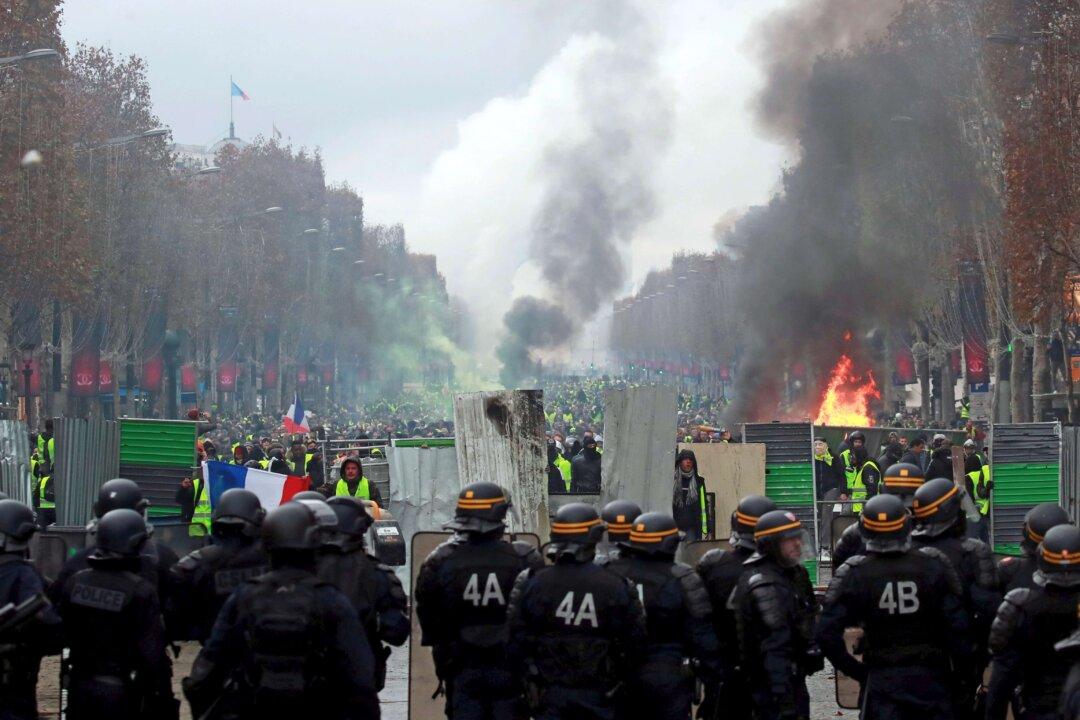PARIS—Police firing tear gas and water cannons clashed in Paris on Nov. 24 with thousands of protesters angry over rising car fuel costs and President Emmanuel Macron’s economic policies, the second weekend of “yellow vest” protests across France.
As night fell, the famed Champs-Elysees, where fashion designer Karl Lagerfeld switched on the red lights of Christmas just a few days ago, was still aglow with fires lit by protesters.





